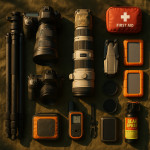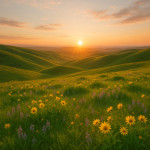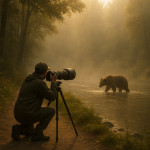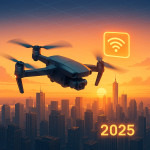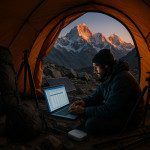Storyboards for Nature Series: Align Visual Narratives with Conservation Goals
A compelling nature series starts long before you hit record. Strategic storyboards transform scattered shots into a persuasive visual narrative that inspires audiences and stakeholders to act for conservation. Follow this step-by-step guide to build storyboards that respect ecosystems, captivate viewers and keep your crew, funders and local communities aligned from pitch to post-launch.
Why Storyboards Matter in Conservation Storytelling
Wild habitats change fast, budgets are tight and permits impose hard limits on filming windows. A well-crafted storyboard reduces costly reshoots by clarifying:
- Narrative arc —the emotional journey that turns scenery into a story.
- Conservation message—the key behaviour or policy you want the audience to adopt.
- Logistical flow—camera angles, light direction and crew placement that minimise habitat disturbance.
Teams that storyboard gain up to 30 % shorter edit cycles and report higher engagement on release, according to WWF campaign post-mortems published between 2019 and 2023.
Pre-Production: Define Your Conservation Goal
Pinpoint the desired action
Start with one measurable objective—petition signatures, habitat-restoration donations, citizen-science uploads, etc. Clarity here shapes every frame later.
Research local context
Consult park rangers, scientists and Indigenous stewards to understand seasonal behaviour, cultural sensitivities and no-go zones. Their insight often redirects the storyboard to safer camera placements or more accurate species behaviour.
Draft a one-sentence logline
Example: “Through the life of a single mangrove seedling, viewers see how coastal roots protect both wildlife and human homes.” This sentence guides every storyboard panel.
Storyboard Structure: Panel-by-Panel Essentials
| Panel Element | Conservation Focus | Production Tip |
|---|---|---|
| Wide Establishing Shot | Show habitat scale and threats | Use morning golden hour for soft shadows |
| Character Close-Up | Create empathy with flagship species | Stabilise on tripod, 200 mm lens, eye-level angle |
| Process Sequence | Reveal restoration work in action | Plan three-shot rule: wide, medium, detail |
| Conflict Beat | Highlight looming risk (e.g., plastic waste) | Cutaway inserts keep pacing tight |
| Hopeful Resolution | Show positive change and call-to-action | Add on-screen URL & QR code |
Visual Techniques That Reinforce Eco-Ethics
1. Light with intention
Natural light reduces generator use and preserves acoustic environments. Master sun-path scheduling to anticipate ideal angles and avoid nesting hours.
2. Minimise drone disturbance
Keep altitude above 50 m when filming birds and limit flights to 10-minute bursts. Our guide on drone or ground angles compares shots so you can storyboard wisely.
3. Show, don't preach
A visual revelation—such as coral bleaching time-lapse—outperforms talking-head lectures in recall tests. Reserve voice-over for facts the image cannot carry.
4. Embed ethical captions
Use lower-thirds to credit local experts and name protected areas, reinforcing transparency. For deeper ethical guidelines, review our piece on ethical landscape imagery guidelines.
Workflow: From Sketch to On-Location Shoot
- Thumbnail sketches—rough rectangles to map framing and approximate timing.
- Shot list extraction—translate each panel into lens choice, movement, audio notes.
- Permit alignment—cross-check storyboard with land-use permissions and animal-approach buffers.
- Community review—share boards with local stakeholders for cultural accuracy.
- Production brief—issue final PDF with frame grabs, GPS pins and back-up weather plans.
Case Study: Mangrove Guardians Mini-Series
Goal: Raise €50 000 for seedling nurseries in three months.
- Storyboarded five 60-second episodes, each climaxing with a donor QR code.
- A/B-tested two endings: data overlay vs. human testimonial. Testimonial variant achieved 18 % higher click-through.
- Series surpassed goal in six weeks and secured a Netflix short-form acquisition.
Distribution Strategy: Keep the Storyboard Alive
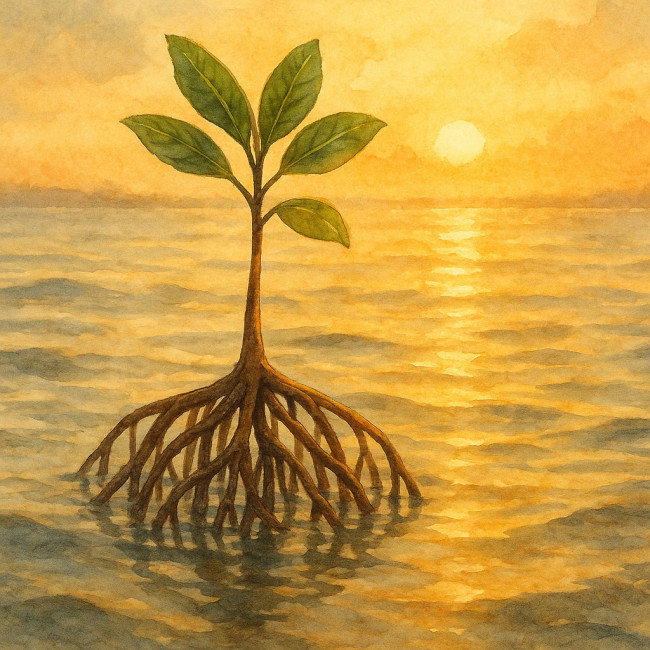
Repurpose storyboard panels as Instagram carousel frames, newsletter GIFs and pitch-deck illustrations. Interactive deliverables such as interactive 360-degree tours let audiences explore the habitat virtually, increasing dwell time by up to 45 %. You can also turn individual frames into short vertical videos for TikTok or LinkedIn, pair them with behind-the-scenes facts and reach viewers who rarely click long-form documentaries. Printed postcards, educational posters and local visitor-centre exhibits extend the same visuals offline, sparking real-world conversations and donation drives. Whatever the channel, keep colour grading, typography and call-to-action icons consistent so recognition snowballs with every exposure.
Common Pitfalls and How to Avoid Them
- Over-scripted dialogue—let natural sound carry emotion; storyboard space for silence.
- Mission drift—revisit your logline when adding B-roll to maintain focus.
- Last-minute CTA—embed the call-to-action visually in two earlier panels for reinforcement.
- Ignoring alt-text—when storyboards become web graphics, describe each frame for accessibility.
FAQ
- How many storyboard panels for a 3-minute nature film?
- Plan roughly 18–24 panels; one every 7–10 seconds keeps pacing dynamic without overwhelming field crews.
- Can I reuse panels across episodes?
- Yes. Repeating a location-establishing panel saves budget and reinforces thematic unity.
- Is voice-over mandatory?
- No. Subtle on-screen text plus powerful visuals often feel more authentic to eco-minded audiences.
- Where can I find vetted nature cinematographers?
- Browse the professional nature photographers directory to shortlist talent with relevant permits and field gear.
Quiz: Are Your Storyboards Conservation-Ready?
Next Step: Put Your Storyboard to Work
Ready to turn sketches into change? Download our free storyboard template and start mapping your next nature series today. Your visuals can inspire policy, funding and community action—make every frame count.
Keep learning: Explore sustainable angles, light tricks and ethics in our other guides, then return to refine your storyboard.
